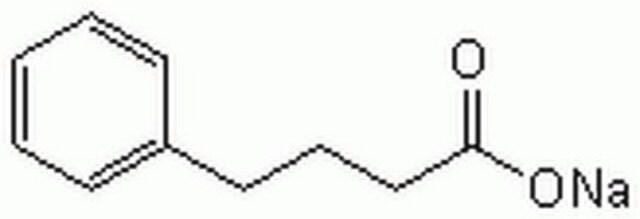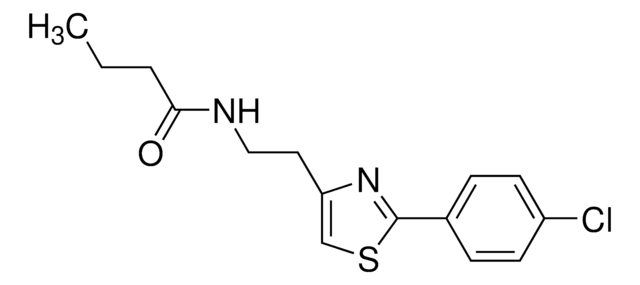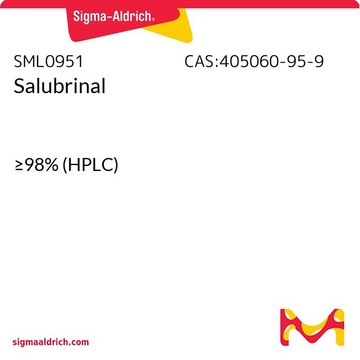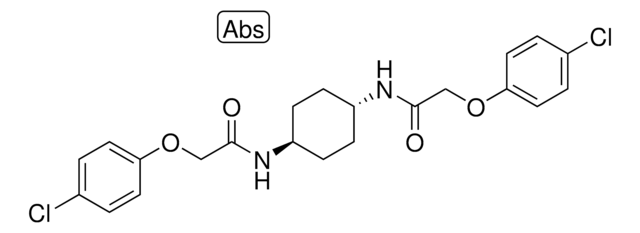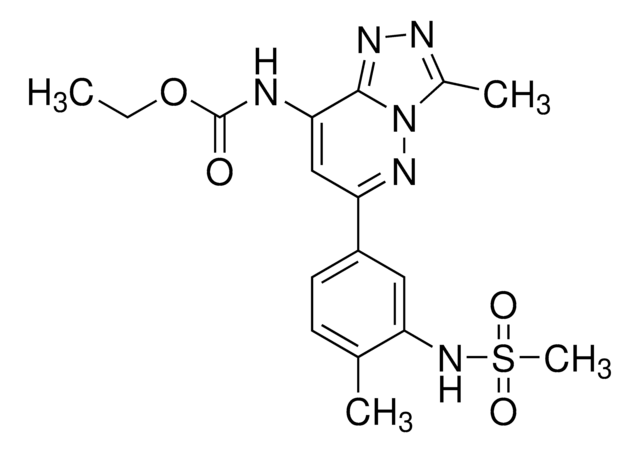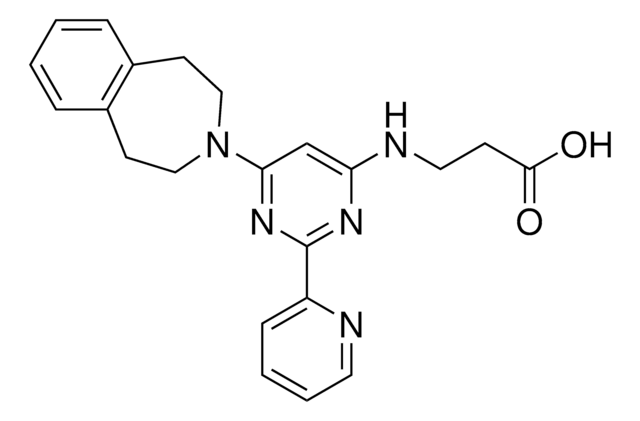SML0309
Sodium phenylbutyrate
≥98% (HPLC)
Synonym(s):
4-PBA, 4-Phenylbutyric acid, 4-phenylbutyrate, Buphenyl, Sodium 4-phenylbutyrate, TriButyrate
Sign Into View Organizational & Contract Pricing
All Photos(1)
About This Item
Empirical Formula (Hill Notation):
C10H11NaO2
CAS Number:
Molecular Weight:
186.18
MDL number:
UNSPSC Code:
12352200
PubChem Substance ID:
NACRES:
NA.77
Recommended Products
Quality Level
Assay
≥98% (HPLC)
form
powder
color
white to beige
solubility
H2O: ≥5 mg/mL
storage temp.
room temp
SMILES string
[Na+].[O-]C(=O)CCCc1ccccc1
InChI
1S/C10H12O2.Na/c11-10(12)8-4-7-9-5-2-1-3-6-9;/h1-3,5-6H,4,7-8H2,(H,11,12);/q;+1/p-1
InChI key
VPZRWNZGLKXFOE-UHFFFAOYSA-M
Looking for similar products? Visit Product Comparison Guide
General description
Sodium phenylbutyrate stimulates urinary nitrogen excretion. It is a prodrug, which undergoes β-oxidation to phenylacetate. Sodium phenylbutyrate is used to treat urea cycle disorder. It might be associated with menstrual dysfunction, amenorrhea and painful mucositis of the esophagus and stomach.
Application
Sodium phenylbutyrate has been used as an endoplasmic reticulum (ER) stress inhibitor to study the role of ER stress in the expression of betatrophin.
Biochem/physiol Actions
Sodium phenylbutyrate is a histone deacetylase inhibitor.
Features and Benefits
This compound is a featured product for Gene Regulation research. Click here to discover more featured Gene Regulation products. Learn more about bioactive small molecules for other areas of research at sigma.com/discover-bsm.
Storage Class Code
11 - Combustible Solids
WGK
WGK 3
Flash Point(F)
Not applicable
Flash Point(C)
Not applicable
Choose from one of the most recent versions:
Already Own This Product?
Find documentation for the products that you have recently purchased in the Document Library.
Customers Also Viewed
The Molecular and Genetic Basis of Neurologic and Psychiatric Disease (2008)
Advances in Clinical Chemistry, Volume 17 (2014)
Phase 2 comparison of a novel ammonia scavenging agent with sodium phenylbutyrate in patients with urea cycle disorders: safety, pharmacokinetics and ammonia control
Lee B, et al.
Molecular Genetics and Metabolism, 100(3), 221-228 (2010)
Association between betatrophin/ANGPTL8 and non-alcoholic fatty liver disease: animal and human studies
Lee YH, et al.
Scientific Reports, 6(3), 24013-24013 (2016)
Xiujing Dou et al.
Food & nutrition research, 62 (2018-12-24)
Host defense peptides (HDPs) possess direct antibacterial, antineoplastic, and immunomodulatory abilities, playing a vital role in innate immunity. Dietary-regulated HDP holds immense potential as a novel pathway for preventing infection. In this study, we examined the regulation mechanism of HDPs
Our team of scientists has experience in all areas of research including Life Science, Material Science, Chemical Synthesis, Chromatography, Analytical and many others.
Contact Technical Service

